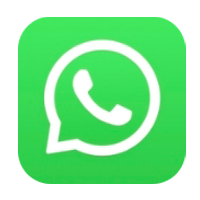Application of Communication Command and Dispatch Machine in Fire Emergency Command Site
Application of Communication Command and Dispatch Machine in Fire Emergency Command Site
1. Current situation and problems:
Nowadays, fire brigades commonly use walkie talkies for communication and liaison during on-site command, and high-power radio stations are commonly used for communication between the scene and the command center. Some fire brigades are also equipped with audio and video command terminals.
In some large disaster relief sites, there are usually departments such as public security, health, and electricity in addition to the fire department, which requires each department to take into account the coordination work of other departments. If frequent switching of walkie talkie channels is not feasible, some units' wireless intercoms are not in the same frequency range or not of the same standard. Such as 350M frequency band, 800M frequency band, air-to-air communication frequency band, etc. Sometimes leaders also need to use GSM mobile phones and landline phones to understand and command on-site work.
2. Requirement:
Multiple wireless cluster radio Requirement:
stations, especially those with different frequency bands and standards, need to be equipped for fire scene command personnel. These radio stations should be linked together through a dispatch machine, and the operation of the dispatch machine should be used to monitor, command, and merge the clusters of each radio station. Considering the complexity of the site, if there are communication vehicles on site, touch screen dispatch consoles, audio and video dispatch tools can be configured. If there are no dispatch vehicles, simple dispatch tools such as keyboard dispatch consoles can be configured.
GSM/CDMA SIM cards or 4G communication cards can also be configured on the dispatch machine to maintain communication with the outside world.
Voice recording devices can also be installed to record the entire on-site voice.
A comprehensive scheduling system can also bind video signals to achieve the coordination of voice and data. It can also synchronize with geographic location information and display the location information of the scheduled object simultaneously.
3. Application system:
The following figure is an example of a wireless cluster application.
4. Function Introduction:
The IDM M9000 in the figure can insert 12 access service disks,
If a radio interface card is inserted, a maximum of 4 radio stations (clusters) can be connected to each card;
If a SIM card is inserted, 8 calls (FXO or FXS) can be made;
If a GSM/CDMA SIM card is inserted, two SIM cards for mobile phones can be connected.
The WG300 processing disk has an IP telephone gateway function, which can realize the interconnection of simulated voice services to IP (compliant with SIP standard VOIP protocol), and can achieve scheduling and data storage on IP.
The central processing disk WG300 also has TDM based telephone exchange function. The voice service on IDM M9000 can be exchanged through program-controlled telephone exchange, with the number of users and relay ports interchangeable, and a total capacity of 120 channels.
The central processing disk WG300 has multi-party voice conferences, which can allocate conference rooms for cluster radio stations and IDM MCC keyboard dispatch stations, thereby achieving flexible multi-party communication functions.
The central processing disk WG300 also has E1 based digital signaling extension function, which can realize the conversion of China No.1, China No.7, PRI signaling, etc.
5. Introduction to IDM MCC Dispatch Console Functions:
IDM MCC is an IP keyboard dispatch console without a computer system. It can be connected to IDM M9000 through an Ethernet switch and has flexible installation locations. Built in 10W loudspeaker, can be deployed through any IP channel, easy to use.
There are 5 sets of corresponding buttons for radio stations on IDM MCC (corresponding relationships can be set).
Listening function: When listening to the selected radio station, the corresponding indicator light displays the color of the listening status. If there is sound in the radio cluster of the channel, the speaker will have amplification output, and the corresponding channel indicator light will flash.
Speech function: If a channel allows speech (adjustable), the speech indicator light for that channel will be on. Press the group send button at this time, and the sound in the microphone will be broadcasted in all allowed clusters.
If stronger scheduling capabilities are needed, coordination between the scheduling server and the touch screen scheduling console is required.








 86-18710178699
86-18710178699  xufei@rdtcom.com
xufei@rdtcom.com